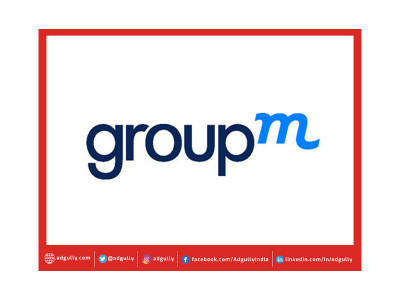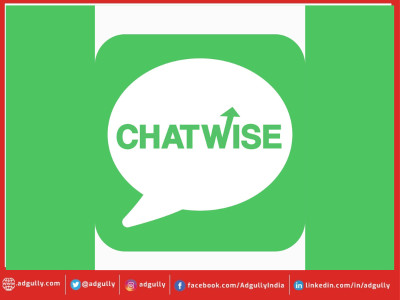Global ad revenue to grow by 5.9% in 2023, reaching $874.5 bn: GroupM
GroupM, WPP's Media Investment Group, has released its highly anticipated mid-year report, providing valuable insights into the global advertising industry and its future outlook. Despite the lingering effects of the pandemic, the report indicates a return to normalcy in terms of advertising revenue growth and highlights several key trends shaping the industry.
The report acknowledges that while the worst of the pandemic is behind us, behavioral changes and capital flows impacted by the crisis are still affecting the global economy. Government spending on public health messaging and consumer stimulus payments has declined, and securing private investment has become more challenging due to rising interest rates combating pandemic-driven inflation.
Also Read: Indian Sports Industry surpasses INR 14,000 Crore: GroupM
Also Read: DOOH is showing increasing traction as a performance medium: Experts
Looking ahead to 2023, GroupM maintains its estimate of 5.9% growth in advertising revenue, adjusted for inflation. The automotive sector is expected to regain momentum, promoting inventory, and the anticipated upgrade cycles for computers and TVs purchased during the pandemic are set to drive growth. Notably, ongoing events such as the war in Ukraine and the widespread application of artificial intelligence (AI) continue to shape the advertising landscape.
Connected TV (CTV) adoption is rapidly increasing among consumers and advertisers, with a projected compound annual growth rate of 10.4% in ad revenue between 2023 and 2028. Subscription video on demand (SVOD) accounts for a fraction of total video spending, leaving significant room for streaming providers to expand subscriptions. The report emphasizes that regulatory factors related to data privacy, national security, competition, and freedom of speech may lead to shifts in market share rather than industry decline for big technology and advertising platforms.
Retail media emerges as the third-fastest growing advertising channel in 2023, with a forecasted growth rate of 9.9% to reach $125.7 billion. By 2028, it is expected to surpass TV revenue. The definition of retail media now includes ad revenue from last mile delivery services, reflecting the evolving landscape.
GroupM predicts that global advertising revenue will grow by 5.9% in 2023, reaching $874.5 billion (excluding U.S. political advertising). The report attributes the consistent forecast since December 2022 to the increasing maturity of the digital channel and its major players. Digital pureplay ad revenue is anticipated to account for 68.8% of the total in 2023, with single-digit growth expected over the next five years.
Artificial intelligence (AI) is set to play a significant role in advertising revenue, potentially influencing or touching at least half of all ad revenue by the end of 2023. The report highlights the responsible and safe use of AI as it disrupts various aspects of advertising and media.
New business growth and competition remain crucial factors in forecasting advertising growth. The slowdown in advertising spend among digital economy businesses and start-ups in 2022 contributed to the overall decline, while new AI-focused businesses formed now are expected to drive future ad growth.
Market shifts within individual countries have been observed, with varying adjustments to revenue expectations compared to the December 2022 forecast. Notably, China is projected to grow ad revenue by 7.9% in 2023, while markets like India, Australia, Canada, France, Indonesia, Hungary, Singapore, Kenya, and Sweden have revised their expectations.
Digital ad revenue continues to dominate, accounting for 68.8% of total revenue in 2023. However, the growth rate has decelerated, reflecting the maturity of the digital channel. Retail media, on the other hand, is experiencing strong growth, reaching $125.7 billion in 2023.
Connected TV (CTV) is gaining traction as linear TV audiences decline. Global traditional TV revenue is expected to decline by 1.2%
Political and regulatory landscape
The report also analyses the current political, legal, and regulatory landscape and its impact on the media and advertising industry. The report highlights several important points that businesses and advertisers should consider.
Geopolitical Tensions and Bans on Foreign Platforms: The report addresses the geopolitical tensions between the U.S. and China, which have led to bans on digital publishers such as Google, Meta, and Twitter in China. Concerns over foreign corporations disrupting U.S. social discourse and collecting sensitive data on American citizens have raised the possibility of banning TikTok and other platforms owned by foreign companies across the U.S. Similar bans have already been implemented in government and military devices, individual college campuses, and the state of Montana. The outcome and feasibility of localized bans remain uncertain.
Impact on TikTok and ByteDance: A ban on TikTok in the U.S. and other countries would have a significant, albeit not fatal, blow to TikTok's parent company, ByteDance. It is estimated that less than a quarter of TikTok's total revenue comes from international markets, with the majority coming from Douyin in China. Other social networks like YouTube, Meta, and Snap may benefit from TikTok's bans, but concerns over algorithmic influence and data security make other companies cautious about opening themselves up to government scrutiny.
Political Advertising Revenue: The report discusses the impact of political advertising revenue on the industry. In the U.S., political advertising revenue is substantial, ranking 11th if it were considered a separate market. Different countries have varying regulations and limits on campaign spending, which can affect market size and revenue growth. The report highlights the need to monitor the effects of political spending on the industry.
Misinformation and Disinformation: Governments worldwide are concerned about the spread of misinformation and disinformation, particularly perpetrated by state actors. Platforms like TikTok, Meta, Twitter, and YouTube may face pressure from governments to identify, prevent, take down, and report such content. This could affect the development resources allocated to advertising product upgrades and innovation. Failure to address these concerns may erode government and consumer confidence.
Challenges Faced by News Publishers: Traditional news publishers are facing significant challenges in supporting journalism due to declining audiences and revenue. Some publishers have embraced paywalls, while others rely more heavily on advertising. Initiatives worldwide aim to address the dynamics of the news economy, including legislation that allows news publishers to negotiate with aggregators like Google and Meta.
GDPR and Data Privacy: The report highlights the impact of GDPR on digital advertising and the ongoing challenges faced by companies in complying with privacy regulations. Recent cases involving Meta and the Ireland Data Protection Commission emphasize the need for platforms to gain explicit consent for data collection and usage. Any changes in consent mechanisms could have implications for advertising growth, similar to the impact of Apple's App Tracking Transparency update.
Risk Mitigation in User-Generated Content: Advertisers and agencies must assess their risk tolerance for platforms that rely on user-generated content. While platforms like Google and Meta offer vast audiences and advertising opportunities, they also come with associated risks. Mitigation efforts, such as brand suitability and exclusion efforts, can help advertisers continue reaching large audiences while minimizing risk.
The report provides valuable insights into the political, legal, and regulatory challenges faced by the media and advertising industry. Advertisers and businesses are advised to consider these trends and adapt their strategies accordingly to navigate the evolving landscape.


















Share
Facebook
YouTube
Tweet
Twitter
LinkedIn